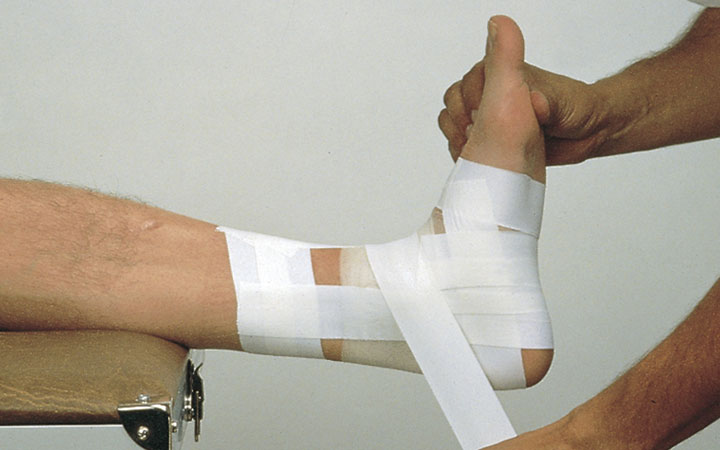Kinesiology taping is a terrific tool trainers, therapists and chiropractors use to support the body and enhance movement. It is a precision technique, using a unique, stretchy and flexible athletic tape designed to mimic the properties of skin. My colleagues and I at Mark Kemenosh and Associates use it almost every day and find it very effective for temporary joint and muscle support, pain relief and to enhance posture and mobility.
Dr. Kase’s innovation
Dr. Kenzo Kase developed the tape and technique after years of experimentation. Back then, in the 1980s, all athletic tape was stiff and unforgiving, designed to immobilize. Dr. Kase envisioned a tape system that could support without restricting movement. He succeeded – and gave it its original brand name, Kinesio, derived from kinesiology, the study of biomechanics and how living things move.
Known generically as elastic therapeutic tape, it is sold under a variety of other names, including KP Tape, RockTape, Theraband and others. Although it’s been around for decades, it’s gotten wide exposure in recent years as prominent athletes have adopted it. It’s that colorful pattern of stripes seen on both professionals and Olympians.
The tape creates a web of support that takes some of the stress off skin, muscles and joints to provide external support and enhance blood flow and mobility without binding or limiting motion. I like to think of it as taping movement, not muscles. It can be used just about anywhere. The only impediment is heavy body hair, so men will occasionally need to shave the target area before taping. It generally lasts through two showers.
The anti-tape

For decades, coaches and trainers have used traditional athletic tape to protect joints from moving the wrong way or past healthy limits. Think of a football player with taped ankles on game day. It creates a stiff column around the joint, almost like a temporary cast, limiting movement by brute force.
Kinesiology taping does a similar job, in a totally different way. It enhances the body-brain connection that creates proprioception, our sense of where we are in physical space and the position of each part of the body. Instead of mechanically limiting movement, it can amplify the signal, helping the athlete move well, instinctively. It creates another layer of stimulus, especially after injury, when the normal response can be compromised. It can also interfere with pain reception for temporary relief of soreness.
For example, for a sore or strained lower back, a network of tape applied to the area can help maintain a more comfortable, less strained posture.
It’s especially useful when an athletic injury has safely healed to the point of being cleared for play – but still feels tender or sensitive. It brings an extra layer of support and sensory awareness for game day. For example, a soccer player with a sore hamstring or a runner with patella tracking disorder, a misaligned kneecap causing problems in other parts of the leg.
It’s not the ultimate fix, but a useful tool that helps us get there. The research supports using it temporarily to help mitigate pain and enhance range of motion. More research is needed, but we also suspect it can increase blood flow and enhance the movement of lymphatic fluids to help bruises clear faster.
To learn more, ask your trainer or chiropractor.
Kinesio, KP, RockTape and Theraband are trademarks of their respective owners.

